Radiation
Awareness campaign for plan to dump radioactive water into ocean lands creators in hot water.
Video released on same day approval is granted for waste water project at Fukushima nuclear power plant.
Lawsuit claims Tepco misled scale of 2011 Fukushima disaster, causing relief workers to be exposed to radiation.
Following the events of the 2011 Tohoku earthquake and tsunami and the subsequent meltdowns at the Fukushima Daiichi Nuclear Power Plant complex, radiologists in Japan have been closely observing the area for potential changes. A new report by the National Institute of Radiological Sciences now suggests that the fir trees in Fukushima may be exhibiting strange growth patterns, with the radiation from the disaster being named as a possible factor.
Dr. Timothy Mousseau, professor of Biological Sciences at the University of South Carolina and researcher for the Chernobyl and Fukushima Research Initiative, presented new findings to the International Ornithological Congress in Tokyo last week that suggest radiation contamination around Fukushima Daiichi, even at low levels, is negatively impacting biodiversity and wildlife populations.
A “cancer cluster” detected in kids near the Fukushima disaster is probably due to the increased examination of these children, not because of the disaster itself, according to epidemiologist Norman Kleiman of Columbia University.
When the announcement was made that Tokyo would host the 2020 Olympic Games, there was much reason for celebration in Japan. Leading up to the decision, the Japanese leader for the Olympic bid emphatically stressed that the Fukushima disaster would have no impact on life in Tokyo–a claim that was reiterated after the bid was won.
Around that time, a cartoon appeared in a French newspaper depicting mutating sumo wrestlers in front of radiation suit wearing spectators. The Japanese government took issue with it and angrily reaffirmed the safety of the rest of Japan. Still, among many of the citizens, there is sneaking yet widespread suspicion over how safe the Tohoku and Kanto regions actually are, especially with regards to their food products.
It’s often sad to see the workers at the Fukushima Daiichi Plant or any other radioactive site around the world. It’s a dangerous job that requires brave workers, and brave workers deserve a cool looking uniform. Firefighters get those axes and huge trench coats, police often have cool looking bulletproof vests, but workers in areas of high radiation have to wear those white or yellow suits that look like trash bags.
Thankfully, this sad state of affairs may soon change with the development of a fabric which blocks x-ray and gamma-ray radiation.
A thesis which assesses the risks of internal radiation exposure within Fukushima Prefecture following the explosions at the Daiichi Nuclear Power Plant, suggests that the effects of internal radiation fall far below that recorded after Chernobyl.
Ryugo Hayano, who works as a professor at Tokyo University’s Science Research Department, has collected the findings of doctors who conducted research into internal radiation exposure among those living inside of the Fukushima Prefecture. He consolidated these findings into an English journal entitled ‘Proceedings of Japan Academy Series B89’, which is available on the net.
The latest journal is a collection of reports that looks at the degree of radiation exposure through daily food consumption and it is reported to be the first of its kind.
A dinner of boiled vegetables and 3.3 square meters of floor space for sleeping, those are the harsh conditions awaiting laborers who undertake government-mandated decontamination work necessitated by the nuclear accident at Tokyo Electric’s Daiichi Nuclear Power Plant in Fukushima Prefecture. In some cases workers are basically laboring for free when taxpayer-funded danger pay is excluded from their pay packets.
Read More
On March 14, Hiroshima City announced tentative plans to remove molded plastic mannequins depicting the horrors of the atomic bombing from its Peace Memorial Museum by 2016. The proposed removal is in line with a review suggesting displays within the facility be switched to include more that depict actual articles belonging to the deceased and other real items from the period. Opinions from visitors to the museum are split on whether or not the mannequins should be removed.
The three mannequins in question are of an adult woman, a college-aged woman, and a small boy shown wondering through the blast aftermath in a severely burned state. Originally made from wax, the mannequins have been on display at the museum since 1973, and in their current form since 1991.
Read More
After the great earthquake and tsunami that came with the calamities of March 11 2011, many residents to the Kanto region of Japan experienced turmoil on an unprecedented scale. If natural disaster wasn’t enough, there was also the explosion at the Fukushima nuclear plant, spreading radioactive contamination even as far as Tokyo. Now after two years, Fukushima’s 20-kilometer radioactive exclusion zone still remains in place.
While most families fled the contaminated areas in the early stages following the explosion, one brave man remained undeterred by it all, staying put in his hometown. Naoto Matsura (53) is believed to be the sole inhabitant within the 20-kilometer red zone.
Matsumura’s determination to remain rooted in the same place and see through the nuclear catastrophe has caught the attention of many, with his accounts even being adapted into a documentary. The documentary tells of the events after the great earthquake and Mutsumura’s reasons for remaining at his home despite all those around him fleeing, never to return. Perhaps even more interestingly, it gives some rather candid accounts of this man’s feelings towards Tokyo Electric Power Company (TEPCO), the company that operated the stricken Fukushima Daiichi Nuclear Power Plant.
It wasn’t just the earthquake or tsunami of March 11, 2011 that shattered the town of Namie in Fukushima Prefecture, it was the subsequent radiation. Slowly creeping across the once fertile land, it ripped families from their homes and banished them to evacuation centers elsewhere. Today, nearly two years after the worse nuclear disaster since Chernobyl, the entire 86 square miles of Namie have been declared uninhabitable due to high levels of radioactive cesium. Even if families wanted to return, they can’t.
Amid this tragic loss, Google Street View is giving the people of Namie a chance to visit the town they were forced to flee.
Paying Just $11 a Day, Subcontractors Ripping Off Fukushima Nuclear Accident Decontamination Workers
The Tokyo Shimbun has discovered that workers involved with national government controlled cleanup projects resulting from the accident at the Fukushima Daiichi Nuclear Power Plant are being ripped off by subcontractors.
Despite being able to rent lodging facilities from the government and others for free or for very little money, contractors forcibly deduct inflated accommodation and meal charges from workers’ pay. When the 10,000 yen (US$111) a day “danger pay” provided to contractors by the government (read: taxpayers) is taken into consideration, it means the contractors themselves end up forking out a measly 1,000 yen (US$11) a day per worker.
Read More
Following Japan’s 1-0 victory over France in the friendly football (soccer to our North American readers) match last week, a French variety show host made a joke that has touched a nerve here in Japan.
Alluding to Japanese goalkeeper Eiji Kawashima’s impressive skills on the field, the show presented an edited image of the player, showing him with four arms.
The show’s presenter then suggested that Kawashima’s additional limbs might be the result of “the Fukushima effect” and that they had grown after exposure to radiation leaked from the nuclear plant damaged by the earthquake and tsunami in March 2011. While the joke went down well during the show, many Japanese are understandably very upset…
Since the accident at the Fukushima Daiichi Nuclear Power Plant following the terrible East Japan Earthquake in March last year, radiation has unfortunately been a topic of concern for everyone in Japan. It is therefore not surprising that a team of scientists at Tokyo University, where some of the top minds of Japan can be found, conducted a study on how radiation in seafood can be reduced. However, the results which have been reported in the media recently are not what you may expect from Japan’s premier academic institution.
According to reports, the team at Tokyo University, headed by Professor Shugo Watabe, concluded from their experiments that up to 95% of the radioactive cesium contained in fish can be removed by reducing the fish into very small pieces, close to paste form, and washing it repeatedly with water. Read More
On January 16th, a clinic was opened in Tokyo’s Shinagawa Ward to check the levels of internal radiation exposure. The clinic, loosely translated as Radioactivity Premium Dock, offers a complete body scan for radiation levels, among other services, which the general public can access for a fee. The company hopes to reduce anxiety resulting from the Fukushima Daiichi disaster and to help the public manage their health.
Read More
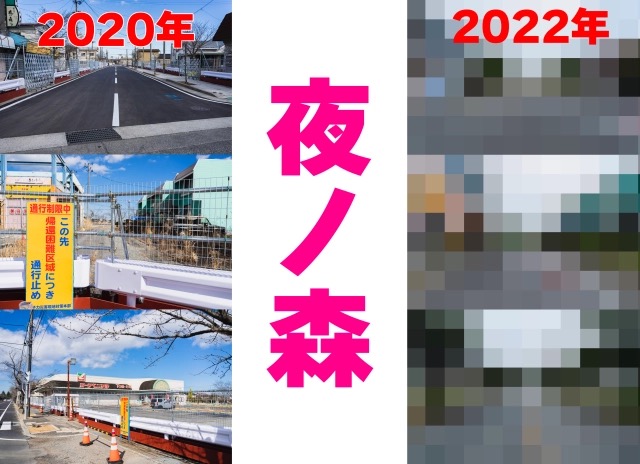
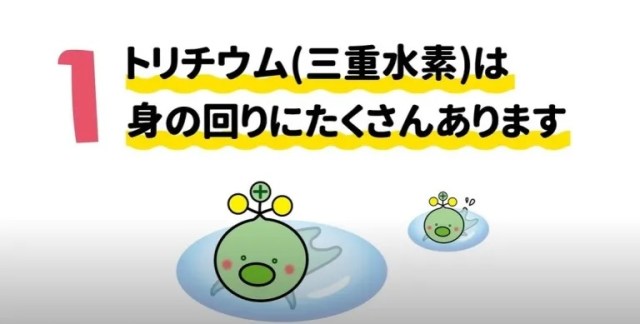
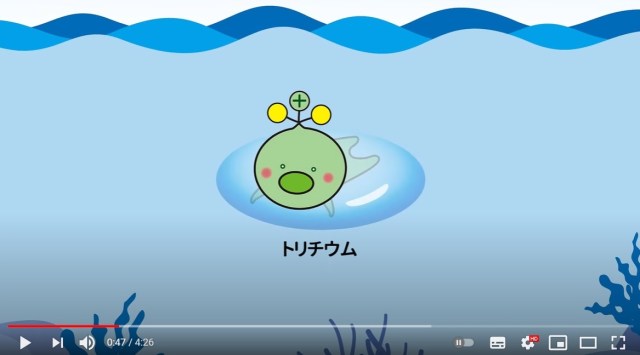

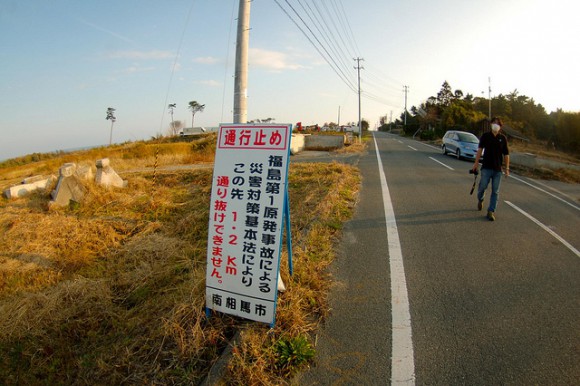
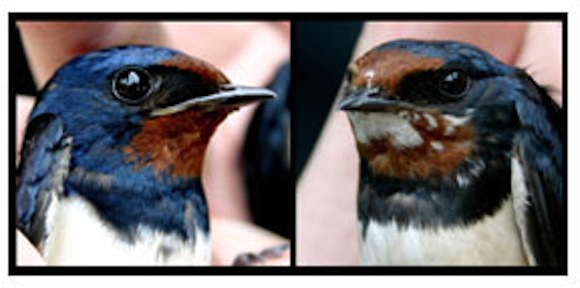
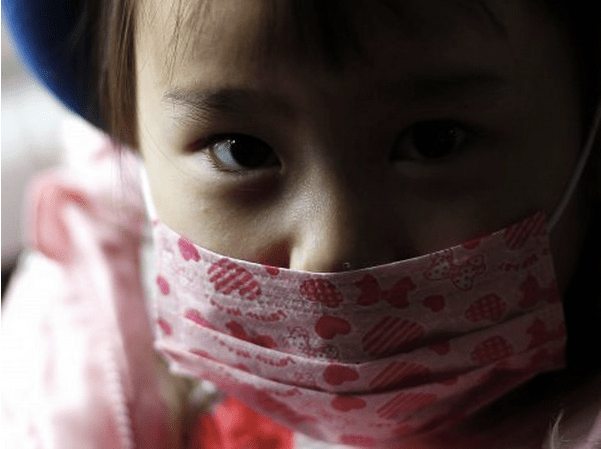
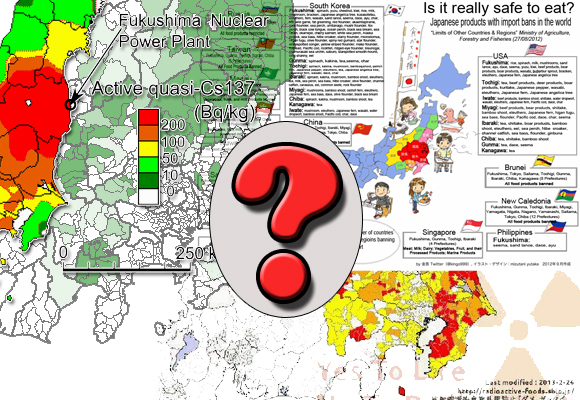
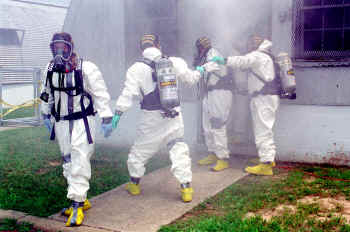
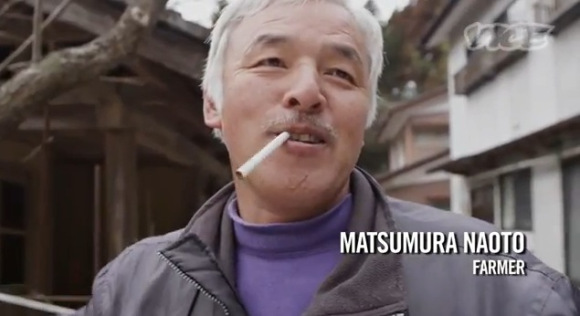
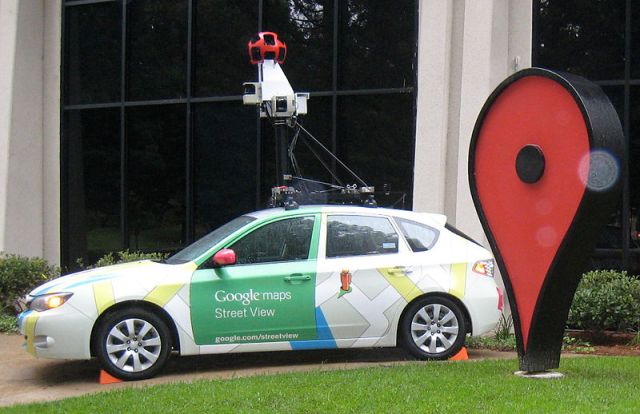

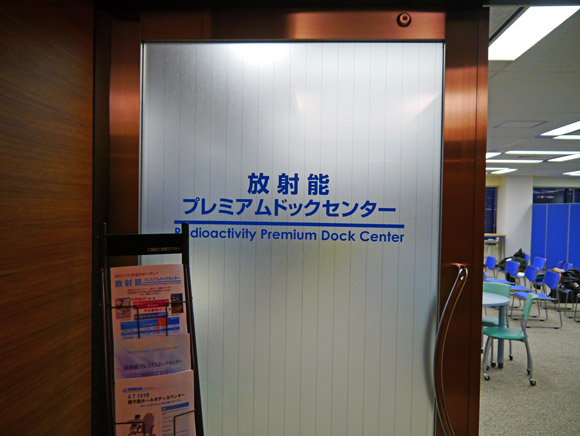
 We found possibly the quietest Japanese-style hotel in Tokyo’s bustling Shinjuku district
We found possibly the quietest Japanese-style hotel in Tokyo’s bustling Shinjuku district Japanese group to hold fashion show of colostomy bags and other stoma equipment in Paris
Japanese group to hold fashion show of colostomy bags and other stoma equipment in Paris Starbucks Japan ready to get Year of the Horse started with adorable drinkware and plushies【Pics】
Starbucks Japan ready to get Year of the Horse started with adorable drinkware and plushies【Pics】 Japanese company brings back “cotton wife” body pillow to enhance the realism of VR games
Japanese company brings back “cotton wife” body pillow to enhance the realism of VR games World’s only Michelin-starred ramen is getting an instant noodle convenience store version
World’s only Michelin-starred ramen is getting an instant noodle convenience store version The meaning of the mandarin and 6 other Japanese New Year traditions explained
The meaning of the mandarin and 6 other Japanese New Year traditions explained Studio Ghibli releases Kodama forest spirits from Princess Mononoke to light up your home
Studio Ghibli releases Kodama forest spirits from Princess Mononoke to light up your home Sato Style: Our ace reporter gets a fashion makeover at Tokyo’s most colorful menswear shop【Pics】
Sato Style: Our ace reporter gets a fashion makeover at Tokyo’s most colorful menswear shop【Pics】 Mr. Sato stops by 7-Eleven’s often overlooked fast food chain Poppo
Mr. Sato stops by 7-Eleven’s often overlooked fast food chain Poppo Dance Dance Revolution Classic mini console set to bring the beat back in micro style【Video】
Dance Dance Revolution Classic mini console set to bring the beat back in micro style【Video】 Lacquerware supplier to emperor of Japan and Pokémon team up for new tableware
Lacquerware supplier to emperor of Japan and Pokémon team up for new tableware Japan may add Japanese language proficiency, lifestyle classes to permanent foreign resident requirements
Japan may add Japanese language proficiency, lifestyle classes to permanent foreign resident requirements 7-Eleven Japan’s ramen-cooking robot whipped us up a bowl of noodles【Taste test】
7-Eleven Japan’s ramen-cooking robot whipped us up a bowl of noodles【Taste test】 Cyberpunk anime meets traditional culture in Ghost in the Shell gold leaf Japanese changing screens
Cyberpunk anime meets traditional culture in Ghost in the Shell gold leaf Japanese changing screens Disillusionment at Tsukiji’s tourist-target prices led us to a great ramen restaurant in Tokyo
Disillusionment at Tsukiji’s tourist-target prices led us to a great ramen restaurant in Tokyo 7 great places to see Mt. Fuji from without having to climb it
7 great places to see Mt. Fuji from without having to climb it Hello Kitty Choco Egg figures are an adorable trip through three periods of Japanese pop culture【Pics】
Hello Kitty Choco Egg figures are an adorable trip through three periods of Japanese pop culture【Pics】 Starbucks Japan releases new zodiac chilled cup drink for 2026
Starbucks Japan releases new zodiac chilled cup drink for 2026 Japan’s otoshidama tradition of giving kids money at New Year’s gets a social welfare upgrade
Japan’s otoshidama tradition of giving kids money at New Year’s gets a social welfare upgrade 7-Eleven Japan starts new temporary luggage storage service in over 300 branches
7-Eleven Japan starts new temporary luggage storage service in over 300 branches Starbucks teams up with 166-year-old Kyoto doll maker for Year of the Horse decorations【Photos】
Starbucks teams up with 166-year-old Kyoto doll maker for Year of the Horse decorations【Photos】 Tokyo considering law requiring more trash cans following litter increase in heavily touristed area
Tokyo considering law requiring more trash cans following litter increase in heavily touristed area Tokyo’s Tsukiji sushi neighborhood asks tour groups to stay away for the rest of the month
Tokyo’s Tsukiji sushi neighborhood asks tour groups to stay away for the rest of the month Nintendo’s Kirby now delivering orders at Kura Sushi restaurants, but not in Japan
Nintendo’s Kirby now delivering orders at Kura Sushi restaurants, but not in Japan Tokyo event lets you travel back in time, for free, to celebrate 100 years since Showa era start
Tokyo event lets you travel back in time, for free, to celebrate 100 years since Showa era start Sanrio theme park in Japan announces plans to expand into a Sanrio resort
Sanrio theme park in Japan announces plans to expand into a Sanrio resort Stamina-destroying “Paralysis Noodles” are Tokyo’s newest over-the-top ramen innovation
Stamina-destroying “Paralysis Noodles” are Tokyo’s newest over-the-top ramen innovation Survey asks foreign tourists what bothered them in Japan, more than half gave same answer
Survey asks foreign tourists what bothered them in Japan, more than half gave same answer Japan’s human washing machines will go on sale to general public, demos to be held in Tokyo
Japan’s human washing machines will go on sale to general public, demos to be held in Tokyo Japan’s deadliest food claims more victims, but why do people keep eating it for New Year’s?
Japan’s deadliest food claims more victims, but why do people keep eating it for New Year’s? We deeply regret going into this tunnel on our walk in the mountains of Japan
We deeply regret going into this tunnel on our walk in the mountains of Japan Major Japanese hotel chain says reservations via overseas booking sites may not be valid
Major Japanese hotel chain says reservations via overseas booking sites may not be valid Put sesame oil in your coffee? Japanese maker says it’s the best way to start your day【Taste test】
Put sesame oil in your coffee? Japanese maker says it’s the best way to start your day【Taste test】 No more using real katana for tourism activities, Japan’s National Police Agency says
No more using real katana for tourism activities, Japan’s National Police Agency says Starbucks Japan reveals new sakura drinkware collection, inspired by evening cherry blossoms
Starbucks Japan reveals new sakura drinkware collection, inspired by evening cherry blossoms Updated cherry blossom forecast shows extra-long sakura season for Japan this year
Updated cherry blossom forecast shows extra-long sakura season for Japan this year The meaning of the mandarin and 6 other Japanese New Year traditions explained
The meaning of the mandarin and 6 other Japanese New Year traditions explained Studio Ghibli releases Kodama forest spirits from Princess Mononoke to light up your home
Studio Ghibli releases Kodama forest spirits from Princess Mononoke to light up your home Sato Style: Our ace reporter gets a fashion makeover at Tokyo’s most colorful menswear shop【Pics】
Sato Style: Our ace reporter gets a fashion makeover at Tokyo’s most colorful menswear shop【Pics】 Mr. Sato stops by 7-Eleven’s often overlooked fast food chain Poppo
Mr. Sato stops by 7-Eleven’s often overlooked fast food chain Poppo Dance Dance Revolution Classic mini console set to bring the beat back in micro style【Video】
Dance Dance Revolution Classic mini console set to bring the beat back in micro style【Video】 Fan fuses anime and reality in the same frame on tour of real-world Free! locations 【Photos】
Fan fuses anime and reality in the same frame on tour of real-world Free! locations 【Photos】 Travel tip: Fukuoka has a great luggage delivery service that’s cheaper than a coin locker
Travel tip: Fukuoka has a great luggage delivery service that’s cheaper than a coin locker We take a ride on Seibu Railway’s futuristic luxury liner: the Limited Express Laview
We take a ride on Seibu Railway’s futuristic luxury liner: the Limited Express Laview Hiroshima, 1958: Everyday life captured on camera 【Photos】
Hiroshima, 1958: Everyday life captured on camera 【Photos】 Happy New Year from SoraNews24!
Happy New Year from SoraNews24! Sumo Sanrio! Hello Kitty and pals team up with Japan Sumo Association for new merch【Pics】
Sumo Sanrio! Hello Kitty and pals team up with Japan Sumo Association for new merch【Pics】 Brighten your day at the Magical Art Museum in Ueno 【Photos】
Brighten your day at the Magical Art Museum in Ueno 【Photos】 “Don’t let it haunt you,” former correctional officer tells about how Japan performs executions
“Don’t let it haunt you,” former correctional officer tells about how Japan performs executions